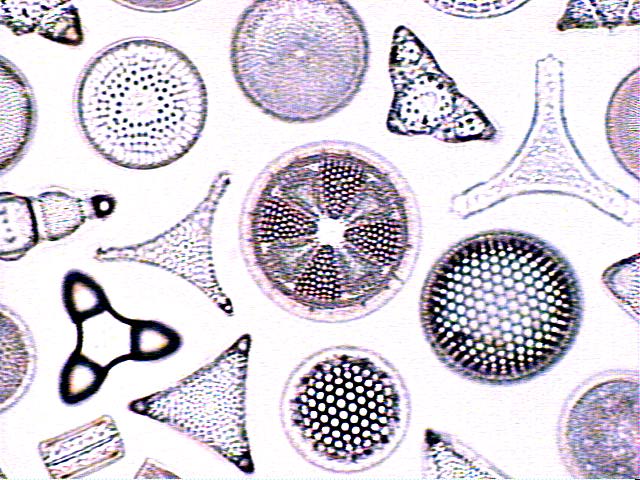I selected diatoms, because from what I remembered I thought that they were creatures that lived in rocky substances or soils, and have a crystallin look to the organism.
 A first look at the organism on the left does not reveal anything that would lead it to be photosynthetic, but it is. They do indeed have chloroplasts and are photosynthetic.
A first look at the organism on the left does not reveal anything that would lead it to be photosynthetic, but it is. They do indeed have chloroplasts and are photosynthetic.The other answers that eliminated are cyanobacteria, dinoflagellates, and Rhodophyta. I eliminated cyanobacteria because I knew that organism got its name from having a cyan color, predominately because it is very photosynthetic. It is a cool organism that is a bacteria and photosynthetic at the same time. I also eliminated dinoflagellates because I distinctively remember that organism being photosynthetic. Under a light microscope it is easy to see the green color from the chloroplasts withiin that organism. The last organism that I eliminated was Rhodophyta. I remembered that this group was a reddish brown algae, and I believe all algae is photosythetic.
I was left with diatoms and Foraminifera. So what exactly is Foraminifera? They are a group of amoeboid protists that undergo a process where they take in algae, and then can temporarily use the plastids for photosynthesis and can be used by the Foraminifera. So in the end, the "forams" are not necessarily photosynthetic in it themselves, but they can use photosynthesis through algae that they take in.
I obviously did not know all of this come time of the question, but the more I look at it, it seems as if it is somewhat of a confusing question, because the "forams" at certain points are photosynthetic, but without the algae they are not. Someone that knows a lot about all five of the organisms in the question might nail this problem, but others may end up arguing with it.